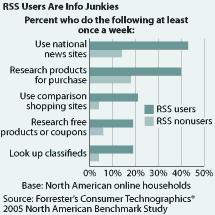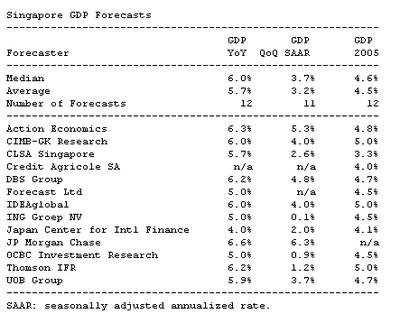We asked nuclear engineer James Muckerheide how many nuclear plants would be needed to bring the world's population up to a decent standard of living, and how to do it. Here are his answers.
In 1997-1998, I made an estimate of how many nuclear plants would be needed in the world by 2050. It reflects an economy that is directed to provide the energy necessary to meet basic human needs, especially for the developing regions.
The initiative required is not unlike what the U.S. government did to build the nation: for example, to bring electric power to rural areas; to provide transportation by building roads and highways and canals, and the intercontinental railroads, and airlines; to develop water supplies and irrigation systems; to provide telephone service, medical and hospital services; and many other programs that were essential to develop an advanced society, and to lift regions out of poverty.
However, we need to do more to meet those needs, both within the United States and for the developing world, to bring those people into the economic mainstream, instead of leaving them to be just cheap sources of our labor and raw materials.
The Role of Nuclear Energy
My projections simply envisioned nuclear energy growing from supplying 6% of world energy needs today to one third of the energy demand in 2050, which was taken to grow by about a factor of 3 from 2000. But, of course, that begs the question: Can fossil fuels continue to provide energy at or slightly above present levels, to produce about one third of the energy demand in 2050? And is it likely that hydro, wind energy, and other alternatives can provide the other third, which is also the equivalent of 100% of today's total energy use?
So, nuclear power in 2050 would be roughly 18 times its current use. This requires fewer than the number of plants I projected in 1997, and is equivalent to about 5,100 1,000-megawatt-electric (MWe) plants.
But nuclear energy must produce more than just electricity; it must produce fresh water by desalination of seawater, hydrogen production to displace gasoline and diesel fuel for transportation, process heat for industry, and so on.
Note that, in this case, nuclear energy does not displace coal, oil, and gas. About 200% of current energy use would still have to come from fossil fuels and alternative sources. If oil and gas production cannot be maintained up to about 100 millions barrels per day, this would require an even greater commitment to nuclear energy, especially if nuclear energy is needed to extract oil from tar sands, oil shales, and coal.
There are pollution-control and other cost pressures limiting supply that will make fossil fuels more costly in any event. We need to consider this in the light that nuclear energy can be produced indefinitely at roughly the cost that it can be produced today.
The alternative is to continue "business-as-usual." These conditions are even now producing international conflicts over oil and gas supplies, large environmental pollution costs in trying to increase fossil fuel production, and high costs to try to subsidize uneconomical "alternative" energy sources. This is leading the world into economic collapse, without adequate energy supplies, where the rich feel the need to acquire the significant resources of the economy, with growing disparities in income and wealth, even in the developed world, and frustration in the developing and undeveloped world from the limits on their ability to function economically.
Calculating Energy DemandBy 2050, given current trends, world population will increase from today's 6 billion-plus people to an estimated 9 to 10 billion people, with most of the increase coming from the developing world. The current development in China, India, and elsewhere, indicates the enormous growth now in progress. Today, if anything, such development projections may be understated.
The industrialized world per capita energy use may drop to 65 to 75% of current use, with increased efficiency, however there will be greater energy demands for the new, non-electrical applications, using more energy to extract end-use energy such as oil and hydrogen.
The developing world will substantially increase per capita energy use, to 40 to 50% of current use in the developed world. Going from a bicycle to a motor scooter, may require only a few gallons of fuel per year, but it's a large increment over the amount being used with the bicycle. And motorbikes lead to cars. Even in the last 5 to 10 years, there has been an enormous increase in vehicles, in China especially, and in other developing regions. These are large population—more than 2 billion people—and their need for oil is becoming enormous.
Therefore, if we are to achieve a world that is providing the energy required for developed and developing societies, along with substantial relief of human suffering and deprivation, energy use will be around three times that of today.
Nuclear Energy is Competitive and Cost-effectiveNuclear power is currently competitive and cost-effective. Numerous pragmatic current and recent construction projects around the world provide a strong basis for cost projections in the United States, Europe, and other locations that do not have current experience. Electricity from available nuclear power plant designs is lower than current costs from recent coal and gas plants, and reasonable projections of electricity costs from future coal and gas plants.
There is a popular view that nuclear power is the high-cost option. However, during the 1968 to 1978 nuclear power construction period, there were economic benefits even when there were almost 200 plants ordered and being procured and constructed, with massive construction costs. All of those plants established strong competition with oil, gas, and coal, and the competitive pressure brought down the cost of fossil-fuel-generated electricity a great deal. Ratepayers in the United States saved billions of dollars in fossil fuel costs over almost three decades.
Without the nuclear option, we have lost that competitive pressure. Prices are not constrained by that competition and have been increased, along with increased demand for scarce oil, gas, and coal resources. So, if we build nuclear power plants, even before a significant number of plants are operational, and especially if we have the ability to build plants in a timely manner, we will have an effect of reducing the excessive demand for, and costs of, coal and gas for providing electricity—to the benefit of the whole economy. We must consider that as part of the economic equation that doesn't presently exist in the way we evaluate nuclear power costs: the externalized benefits to society.
We know about calculating externalized costs, but we do not adequately calculate externalized benefits. It's time to do so.
Of course, people still consider the very high costs of the large nuclear plants ordered in the early 1970s. But these suffered the unanticipated effects of high component and labor costs, design changes in process after the Three Mile Island accident, and long construction times with high financing costs.
Today, we are prepared to manufacture and pre-build modules, reducing construction schedules to limit that long-term financial exposure, even if there were increases in interest rates. Future projects will undertake plant construction with approved designs, with "constructability" incorporated. The current generation of early plants are simply artifacts of the historical first phase of nuclear power plant design and construction, just as the Ford Tri-Motor and the DC-3 are artifacts of the first phases of passenger aircraft.
The Mass Production Road to 2050Because the time frames for these construction requirements are long, and we need significant contributions to power supplies by 2020, we can't just increase production exponentially to put a lot of the power on line in the decade from 2040-2050. We need a substantial amount of nuclear electricity before 2030, and need to install a construction capacity that would produce a stable plant production rate for the future, to meet both a nominal energy growth and to replace old nuclear, and other energy plants. Consider that China is building roughly one new coal plant per week now, and the United States has about 100 coal plants on the drawing board. These plants and hundreds of others will need to be replaced after 2050.
Obviously, we would install much of that capacity between 2030 and 2050. But to get from here to 2030, we have to re-examine how we plan, and commit, to installing nuclear plants. The current idea in the United States, of building one plant by 2010, and 10 more by 2020, is a long way from the needed 2,000 or so in the world by 2030. Fortunately, other countries are doing more to meet the need.
We have to commit now to manufacturing the pressure vessels and other large components in mass quantities, instead of waiting for future ad hoc contracts from individual companies. Waiting leads to substantial overheads and delays to develop contracts, which are subject to the ad hoc process of integrating such plans into the production capabilities of vendors, with, again, rising costs and/or extended schedules, as negotiations are entered for limited production capacity, with high risks perceived for commitments to expand manufacturing capacity vs. the assurance that the industry will not collapse again. Individual companies would still have to develop plans and contracts for new plants, but those plants would come from national policies that engage the developed and developing countries to commit to the production and installation of nuclear power plants to produce a large, worldwide plant manufacturing capacity.
We must also commit to working on evolutionary designs that can reduce the cost of current and future plants. For example, current requirements for containment pressure and leakage, radiation control, including ALARA (the as low as reasonably achievable standard), and so on, can be made more reasonable, along with designs that have less conservatism in design and analysis, without reducing nuclear power plant safety. In addition to engaging the manufacturing industries directly, we must engage the major national and international standards organizations, and other international non-governmental organizations, in this effort.
A plan for rapid growth to a level long-term production capacity to support long-term energy growth and replacement of old plants and fossil fuels, would result in producing roughly 200 new units per year. We can plan for 6,000 equivalent units, taking our present operating plant capacity as about 300 1,000-MWe equivalent units (from about 440 actual units).
There are about 30 units now in construction in the world, with construction times of five to six years, so we are now building about 6 units per year. This will substantially increase in the next two to three years, so we can take something more than 10 units per year as a current baseline, and can plan for a rapid increase in current capacity to a level of about 200 units per year after 2040. We would use current and near-term nuclear power plant construction experience to adopt initial plant designs and major suppliers. We would focus primarily on the required fuel cycle capacity and major component manufacturing, and primary materials and infrastructure, including the required people, to produce nuclear units more like the way we build 747s, with parts in modules being delivered for assembly from around the world, while moving to a more regional manufacturing strategy.
Note that "manufacturing" applies to on-site and near-site support of construction by producing major modules outside of the construction area of the plant itself. The modules built on-site in Japan to construct the two 1,356-MWe ABWRs (advanced boiling water reactors) in about four years, which came on line in 1996 and 1997, weighed up to 650 tons and were lifted into the plant.
The World War II and TVA PrecedentsWe have the experience of the expansion of production capacity in a few years before and during World War II. President Roosevelt anticipated the need, by engaging industry leaders before the U.S. entry into the war, including earlier production to support U.S. merchant marine shipbuilding, and to supply Britain and Russia using the "lend-lease" program. Henry Kaiser built Liberty ships, which took six months before the war, delivering more than one per day.
The early TVA experience built large projects that integrated production and construction, with labor requirements and capabilities. Unfortunately, as with many large organizations, the later management failed to fully understand and maintain the capabilities that were largely taken for granted as the historical legacy of the organization, with inadequate commitments to maintain that capability. However, there are examples of maintaining those capabilities, in organizations like DuPont and the U.S. Nuclear Navy. These principles must be applied.
In addition, our original nuclear power construction experience demonstrates that these capabilities are readily achievable. Today there are 103 operating nuclear units in the United States, ordered from 1967 to 1973. There were about 200 units in production and construction by the late 1970s. So, even with little management coordination—poor management by many owners and constructors, with plant owners, vendors, and constructors jockeying for position and running up costs in the marketplace—we were building about 20 units per year.
But we got ahead of ourselves. Costs were driven up by competitive bidding and capital constraints, but more important, there was much lower electricity growth following the 1973 oil embargo, which had not returned to near pre-embargo rates as had been expected by many in the industry. The then-existing excess baseload plant capacity was sufficient to satisfy the slower growth in demand for two decades, relying primarily on coal, which we have in abundance, and in the 1990s, by building low-cost natural gas-burning plants, when the cost of gas was low. But that was an obvious failure to do competent planning, which has clearly exacerbated our current inadequate ability to provide for long-term energy needs of the U.S. and the world, with rising costs that will threaten the world economy.
The Industrial Gear-up Required forMass Production
What kind of industries would have to gear up—steel, concrete, new materials, nuts and bolts, and reactor vessel producers?
The cornerstone of manufacturing for an accelerated program is in fuel supplies and reactor pressure vessels, along with steam generators and turbines, and large pumps. Much of the piping and plumbing, power systems, cables, instrumentation and other systems, plus the concrete and steel for the containment and other buildings, are high volumes of materials, but these should be more readily met within the general industrial production of concrete and steel, and other industrial components and equipment.
This also contributes to redevelopment of essential production capacities that need to expand and to be retooled, along with reactivating substantial steel capacity.
The fuel supply is critical. Initially, uranium mining can be substantially expanded. However, high-grade uranium supplies will be exhausted, along with surplus nuclear weapons materials, requiring the use of lower-grade ores. Ultimately, uranium can also be extracted from ocean water, at only about 10 times the extraction costs of lower grade ore, where it is replenished from natural discharges into the oceans. Because, unlike other fuels, the cost of uranium is a relatively small fraction of the cost of producing nuclear energy, such an increase does not substantially affect the costs and advantages of nuclear power. Extraction of uranium might be effectively done in conjunction with desalination plants. Uranium from seawater, combined with breeder reactors, makes it clear that these resources are good for thousands of years.
The need for conversion and enrichment capabilities would be substantial, along with fuel assembly manufacturing, including the need to establish large-scale ceramic fuel manufacturing for the high-temperature gas reactors, and develop reprocessing facilities to extend uranium fuel supplies. Initially, this would be done by making plutonium-uranium mixed oxide (MOX) fuels, and then later developing breeder reactor fuels. India, for example, is developing a thorium-based breeder reactor to take advantage of its thorium resources, and limited uranium.
Production to Follow the Eurasian Land-BridgeAs to where the facilities would be located: The idea of Land-Bridge development applies here. Today, pressure vessels are built in a few locations and transported around the world. But in planning for necessary nuclear power plant construction, it would be rational to locate pressure vessel, steam generator, large pump and valve manufacturing, and other major component facilities relative to the major plant construction and transportation locations, along with steel sources. These decisions would be made with the industries and countries that would produce the components.
Initially, two or more major pressure vessel facilities might need to be developed to be able to produce about 20 vessels per year. These would be massive facilities. With an initial target to ultimately produce 200 plants per year in the 2040s, we would decide later whether to develop 10 to 20 such facilities around the world, or to make larger and fewer facilities. This will reflect the capabilities of the various companies that must do the work. We can get that capability into simultaneous production. We can construct the large PWRs in four to five years, even three-and-one-half years or so, and down to two years for the gas reactors, using factory production, and on-site manufacturing production of modules. On-site plant construction is therefore more of an assembly process, as well as the construction process that we normally think of in building large concrete and steel structures and facilities.
Manufacturing facilities would be located with consideration of the known and anticipated locations of future power plants, steel suppliers, transportation capabilities, and so on. A constructive competitive environment can be established to keep the system dynamically improving and reducing costs, with necessary elements of competition and rewards to the companies and people producing the components.
Strategic development and implementation of nuclear plants, like the Eurasian Land-Bridge concept, lies in building networks, not just building out linearly as the United States did in moving to join the East and West in building the transcontinental railroad. It is more like the following period in railroad history, when simultaneous railroad lines were tying together the country; for example, the north and south in bringing Texas cattle to the Chicago stockyards, supported by the telegraph with its ability to implement network communications. The process is explicitly oriented to develop along a strategic path, rather than ad hoc plans to develop energy sources and communications around cities that grow as a result of a non-planned, non-networked, model. To be more precise, in the 1800s the city-region was the network, even in large cities where water and power had to be brought from hundreds of miles away. Today, intercity infrastructure needs to be integrated with intracity-regional systems.
Such strategic plans anticipate growth of large nodes that require substantial infrastructure, which rely on and include power requirements—as in industrial complexes and large cities of more than a few hundred-thousand people. We can consider somewhat separately the mega-cities of 20-plus million people that are being created. They require an obvious, localized, large energy component, with a primary role for electricity, but with a heavy demand on the transportation capacity to supply the population and industries, and export the products of the cities. The growing cities of an integrated industrial economy are networked by transportation and communications. Electrification of the railways, and non-electric energy for heat, for example, to provide desalinated water, must be considered.
Electric grids also require that power loads be balanced, which further requires planning in a network strategy, instead of linear development as occurred in the early United States, where, even after the beginning of installing electricity, "the grid" was essentially localized to cities.
In building out a network, we can take a manufacturing mode with the construction of nuclear plants to supply the network that is growing an industrial economy, instead of a focus on the major cities, as occurred with the original U.S. electric power system development. This fragmented result of ad hoc private decisions, responding to individual profit opportunities, had to later be fixed by government, including, for power, government agencies like the great Tennessee Valley Authority (TVA), the creation of the Rural Electrification Administration, and so on, to bring the nation together. As still is true today, this could not have happened effectively by leaving ad hoc decisions with the private financial interests, focussing on assured quick-return profit opportunities in individual projects. It could be delivered by corporate America when given the opportunity, just as with the great dam projects, providing power and water for cities and irrigation, and even recreation, with the associated economic development of the American West.
So, nuclear power plant construction should be transformed from the mode of plant-by-plant construction of ad hoc projects, into a manufacturing-based strategy. France is a prototype. In 1973-1974 a national decision was made to build nuclear plants in convoy series, to make decisions on designs and to install those designs multiple times, with evolutionary enhancements in size, costs, and safety for future plants. Many plants are put on line in a manufacturing planning mode, not constrained by plant-by-plant decision-making and plant construction mode only as individual project profits can be reasonably assured.
This allows the advantage of mass production, with programmatic commitments to make the vessels and major components to support a plant assembly approach. Individual plants would be installed to meet the electric power market needs. This is especially true of the modular gas reactors.
There are areas that have high power demands now—southern China for example. In addition, there are developing areas extending inland to produce energy for local development along a Silk Road model. Initial energy demands in such areas are not enormous, so that instead of large light water reactor plants, we could incrementally build dozens of modular units over decades, combined with evaluating power to eventually be fed to, and supplied from, the growth of the larger regional and national grid.
Installation sequences would dynamically respond, to both lead and follow growth. We could build two or four plants in one location, and move down the road 200 miles and build two or four more; then build two or four more at the original location as the demand grows. This would be very responsive to local conditions and growing demand over time, while the central facilities would build units in a long-term planned strategy for a number of pressure vessels per year. Although the 285-MWe GT-MHR (General Atomics' gas-turbine modular helium reactor) modular plants are small, compared to light water reactors, the pressure vessels are as large as 1,200-MWe pressurized water reactors (PWRs). When, 10 or 20 years later, we need to expand the capacity to build pressure vessels, we will work with the manufacturers either to expand existing facilities or to select and develop other locations.
Political Framework: The Rai1roads as a ModelSo, we have the intercontinental railroad model: Start at key nodes, and expand toward other nodes. The railroad development in the United States is a paradigm. It shows that we need a central strategy, to empower the private sector to build in the national interest. The people doing the work were competing for contracts and building from, and developing, private industrial growth. Meanwhile, President Lincoln and the Congress made national decisions to establish routes, resolve public domain issues, provide incentives, and so on, that were required to support that strategic development. So, governmental direction and vision are needed, with private development, initiative and competition. This has to establish the framework in which the private industries can compete and succeed, to implement that vision in the national economic interest.
COMSAT is another model. Congress chartered a for-profit corporation to build a global system based on geosynchronous satellites instead of having to later fix a system that AT&T was ready to build based on low earth-orbit satellites with tracking-antenna to address the most profitable city links first, but would have left much of the world without satellite communications. COMSAT also developed contracts with many nations for their own communications development.
We need a similar government vision now on behalf of the nation, and the world, as a whole, with an orientation to critical infrastructure, that recognizes the human and economic needs, that rely primarily on low-cost energy. This does not need to be done by government directly, as was done, for example, with the TVA. But it must reflect a vision that engages the private sector and the public, to inspire people to see that their future security and opportunities are going to be provided by adequate development and growth in national and world economies, that are geared to meet human needs.
Otherwise, we are all going to be in a real crisis. That will become increasingly visible to the general public as our lack of adequate economic infrastructure, especially for energy supplies, with associated environmental and financial costs, as overwhelming the nation, and the world.
So, how do we proceed with this ambitious building and development program? We need both top-level direction and authorization, and private-sector initiatives.
Certainly, the fundamental decisions can only be made at the top. An organization must be created that has the resources and authority to make plans and commitments. But just how centralized that would be beyond the essential commitments and responsibilities for infrastructure planning and financing, how it works as a government/private sector implementation program, is flexible. It does not have to be large.
Private initiatives can be authorized, directed, and supported by government, more like the transcontinental railroad development. It was justified by national needs for mail delivery and military purposes, which also supported stage coaches and early airlines development, providing guarantees and funds for services. Or it can be a more centralized government role, like the TVA development, but thinking of this like Admiral Rickover thought of it, in using the private sector and competition to build the U.S. Nuclear Navy: Get the private sector to develop and deliver the technology, while government makes major strategic and programmatic decisions, contracting to undertake production capacity to meet demanding specifications and performance requirements.
We need a dynamic, competitive, management-driven enterprise, to prevent becoming trapped or captured by either private interests or self-serving government bureaucracies that don't, or don't continue to, perform well, either on the technology side or on the economic side. Such failures leave the national interest hostage to self-serving organizations and financial interests, whether private or governmental.
Consider the building of the transcontinental railroads in the United States, where the Union Pacific and Central Pacific were chartered to do the job, with subsidies, but they had to raise their own money, with government direction and guarantees. This was compromised in many ways, however, including buying Congressional support with Credit Mobilier stock for changes favorable to the owners, and so on. That was not a clean process.
Thomas Durant, who headed the Union Pacific effort, saw that most of the wealth would be generated from developing the track-side land and resources. The companies weren't making much progress on actually building the railroad, so Lincoln worked to shift incentives to have to build so many miles of track, and the company with the most miles of track at the end was going to make more money. Without that, the Union Pacific would have built out only slowly, focussing more on developing the more valuable land resources. So, for many years it was a substantial competition that had them going "hammer and tong." When they were building out, the Central Pacific was trying to get past Salt Lake City, Utah, to the coal deposits in the Wasatch mountains. They failed to do that when they could only get to Promontory Point, where the railroads joined up. But construction was being driven by rewards in obtaining such resources.
But historically, the transcontinental railroads, originally championed by Stephen Douglas, even with the major scandals, were a great and economically important success, as a national economic and political achievement. They captured the imagination of the country.
Achieving a great project transcends such details, and provides for the generation of great wealth for the economy as a whole, for the nation and the world. This wealth is greatly out of proportion to the costs from any such malfeasance.
So, there are lessons from considering where the interests and values are in developing an economy, beyond just thinking of it as a point A to point B transportation construction project, unlike ocean shipping. Or the need to have airlines serve smaller cities as well as the large cities.
What a Nuclear Energy InitiativeCan Bring to the WorldFirst, even though such a nuclear power enterprise is an enormous project to salvage the world energy lifeline and to limit conflicts, while being a primary economic development engine, it is just the core of the larger decisions to provide adequate energy from coal and other technologies, plus other critical infrastructure required to provide for the human needs of the developing and undeveloped world, and expanding productive wealth in the developed world.
In addition, such a nuclear power and/or energy technology development initiative is also a foundation of common science and technology, and common purpose, for the world. It can be a model. It is a national and international enterprise, founded on government and private industry participation. It has the power to limit those non-productive machinations of both government and private financial interests that are in conflict, which constrain responsible government and private interests from working for greater general wealth and constructive progress for both the developed and developing world, while being enormously successful financially.
Nuclear power also has the advantage that it currently has a high international profile, and substantial, if relatively non-productive, ongoing national and international government organizations. For example, the United Nations, especially with the International Atomic Energy Agency, the International Energy Agency, and the Non-Proliferation Treaty, which is essential to our need to safeguard uranium enrichment and plutonium production, plus many other institutional components. The major industry organizations are also more coordinated and compatible, with technologies and capabilities that are more complementary than other equivalent industries.
In addition, such actual public/private mechanisms can transcend some of the destructive national conflicts and destructive financial conditions, to meet actual worldwide energy needs, and to actually implement essential nuclear power energy supplies to prevent world conflicts over energy—in the real world. This can provide an initiative with a productive purpose that can push current non-productive governmental organizations to replace non-productive dialogue and make actual progress in meeting the human needs of the world.
With any success, these mechanisms can also contribute to models that can address other substantial national and international purposes, to engage the developed and developing nations to enable solutions, beyond current "policy discussions." These mechanisms can enable productive cooperation, along with healthy competition, that can enhance relevant technologies, and lower costs, instead of seeing little actual progress in major projects. This can include basic infrastructure, health care, and drug delivery, education and communications, and so on. These initiatives can constrain costs, and preclude destructive financing costs on developing and undeveloped nations.
The nuclear power enterprise can reduce the coming world energy conflicts, create wealth, and be a model to address the inability to deliver technology and services to the developing and undeveloped world and bring these societies into the economic mainstream. This can be the primary economic engine, the wealth-generating machine, for the 21st Century.
James Muckerheide, the State Nuclear Engineer for the Commonwealth of Massachusetts, is a founder and President of Radiation, Science, & Health. He is also director of the Center for Nuclear Technology and Society at Worcester Polytechnic Institute, which is working to establish a level playing field for decisions on the costs and benefits of nuclear technologies that are essential to human prosperity in the 21st Century.
A full version of this article <
21st Century Science & Technology magazine >
from Executive Intelligence Review










